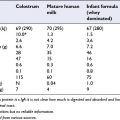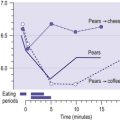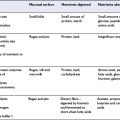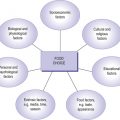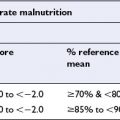CHAPTER 2 Body Composition and Energy Balance
By the end of this chapter you should be able to:
• define terms for components of body composition
• describe their relative size and variation
• describe their main characteristics and functions
• summarize the use of composition information in nutrition
• explain the laws of thermodynamics
• define types and units of energy
• identify and quantify the food sources of energy
• describe the main factors affecting energy intake
• explain the components of energy expenditure, their relative size and variability
• describe the methods of measurement of energy expenditure for different purposes
• describe the assessment of energy needs
• identify the main types of signals in relation to hunger and satiety
• describe the changes in energy expenditure that occur in response to undernutrition and overnutrition
2.2 BODY COMPOSITION AND FUNCTION
The percentage of body weight made up of the main tissues is typically: adipose tissue 28, 35; muscle 37, 33; bone 14, 13; and skin 6, 6, for men and women respectively.
Water and electrolytes
The total amount of water in the body, and the partition of body water between ICF and ECF, is closely regulated (see chapter 4). Body stores of protein, energy, vitamins and minerals ensure survival for many weeks without dietary intake, but deprivation of water causes death in a few days. The principal anion in ICF is K, with a small amount of Na and Mg. The principal anion in ECF is Na, and Cl is the principal cation.
Bone
An adult body contains approximately 1 kg of Ca, of which 99% is in bone. This acts as a reservoir to maintain an appropriate plasma concentration of calcium. The skeleton also contains approximately 500 g of P and more than half the collagen in the body, the remaining collagen being in skin, tendons, and fascial sheaths. For more details see chapter 9.
Muscle
There are three types of muscle: skeletal, smooth and cardiac. In a typical adult, skeletal muscle accounts for approximately 35% of body weight, and another 10% is smooth muscle. Resting skeletal muscle has a lower energy consumption per unit weight than tissues such as heart, liver, kidneys or brain, but during vigorous physical exercise the energy consumption in muscle greatly exceeds the total of all other body tissues. Skeletal muscle consists of bundles of individual muscle fibres, each constituting a muscle cell and containing hundreds to thousands of myofibrils which each contains about 1500 myosin filaments overlapping with around 3000 actin filaments. When the muscle contracts the overlap between the actin and myosin fibres increases and the bones to which these ends are attached are pulled towards each other. Skeletal muscle has two types of muscle fibres: red and white fibres. Red muscle sustains posture for long periods, while white muscle is for rapid movement. In human subjects most muscles contain a mixture of red and white fibres. The process of muscle contraction is considered in chapter 7.
Blood
WBCs are approximately a thousand times less common than RBCs in the blood. The commonest type of WBC is the polymorph, or neutrophil granulocyte, which, like RBCs, is formed in bone marrow and rapidly increases in number in response to infection or tissue injury, surviving in the peripheral circulation for a very short time; their half-life is estimated at 6–8 hours. The next commonest WBC is the lymphocyte, which is formed in lymphoid tissue and is involved in immune responses. The remaining WBCs (monocytes, basophil and eosinophil granulocytes) occur still more rarely. Platelets are very small cells that are involved in blood clotting and the repair of damaged blood vessels.
2.3 CHANGES IN BODY SIZE AND COMPOSITION
Throughout the lifespan
On the first day after fertilization the human embryo is a single cell, approximately 0.15 mm in diameter. After two months of intrauterine life it is about 30 mm long with recognizable head, trunk and limbs; the head accounts for half the total body length. By the end of normal gestation at 9 months, the fetus is 500 mm long and weighs about 3.5 kg, the head being one-quarter of total length. After two decades of extrauterine life the average adult weighs about 70 kg and is 1.7–1.8 m tall, with the head accounting for only one-eighth of total height.
During growth there are changes in the composition of the tissues (Table 2.1). The embryo contains a very high percentage of water, but with maturation during childhood and adolescence the proportion of water in the body, and the proportion of extracellular to intracellular water, decreases. Fat-free mass remains fairly constant in both men and women between the ages of 20 and 65 years, but then decreases by about 15% in the next two decades. Throughout adult life there is a trend for fat mass to increase in both men and women, but the increase is more rapid in post-menopausal women.
Through diet and exercise
Over a given period, if the energy intake of an individual is less than energy output, then the energy stored in the body is reduced by the same amount, by losing fat, fat-free tissue, or (more probably) a mixture of both lean and fat tissue. However as weight is lost, resting energy expenditure also decreases, so for a given energy intake the energy deficit, and hence the rate of weight loss, also decreases. Weight loss is significantly faster during the first week than during the next 2 weeks because during the first week on a diet glycogen and its associated water (see chapter 4) is lost, especially on very low carbohydrate diets. During total starvation weight loss is even more rapid, partly because the energy deficit is greater, and partly because a higher proportion of the weight loss is fat-free mass to provide amino acids for glucose synthesis (see chapter 4). Total starvation has ceased to be an acceptable treatment for gross obesity because several patients died unexpectedly, due to damage to heart muscle.
Bone density is affected by diet, exercise, genetic and other factors (see chapter 9).
Through changes in hydration
Regulation of body water is discussed in chapter 4. Dehydration may occur if water losses are very high, as in severe diarrhoea, or with sweat loss in high ambient temperature or during prolonged vigorous exercise. Dehydration may also occur with abuse of diuretic drugs to achieve weight loss, or during the recovery phase of diabetic coma.
Oedema is also a feature of certain types of malnutrition. It is a striking feature of kwashiorkor (see chapter 8). A marasmic child does not show obvious oedema; however in such children water accounts for an abnormally high proportion of body weight.
2.4 USE OF BODY SIZE AND COMPOSITION DATA IN NUTRITION
Body size and composition is useful for the assessment of current nutritional status, and serial measurements for changes in status, and also for standardization of physiological measurements and drug dosage. Measurements of the size and composition of a body are made for nutrition assessment to estimate the extent of obesity, thinness, muscle wasting and stunting (see chapter 12), osteoporosis (see chapter 9) and anaemia (see chapter 5). Many physiological measurements give results that are related to body size or composition and so have to be standardized for comparisons. For example larger people expend more total energy than smaller people for the same activity but if the energy expended is expressed per unit body weight or per unit fat-free mass, this may not be the case. It is sometimes necessary to adjust for body size or composition, for example to calculate the dose of drugs given to small children.
• A healthy adult male contains about 60% water, 17% protein and 17% fat
• Total body water, the partition between intracellular and extracellular water, and its electrolyte composition are normally tightly regulated
Stay updated, free articles. Join our Telegram channel

Full access? Get Clinical Tree



